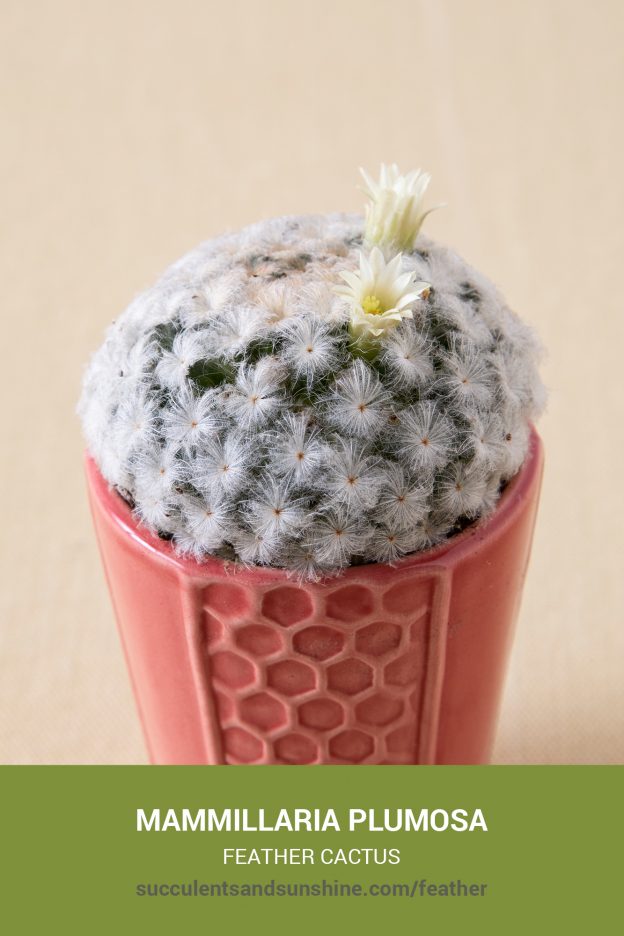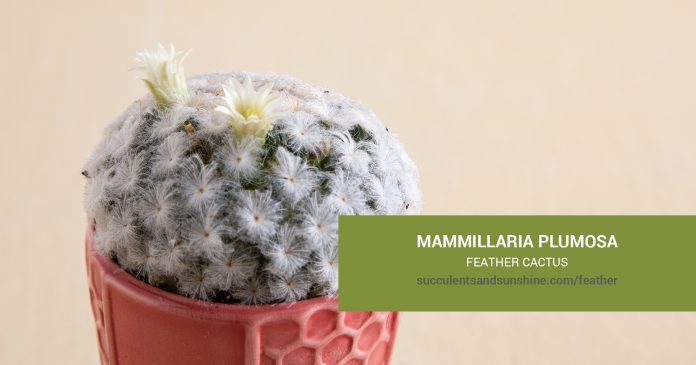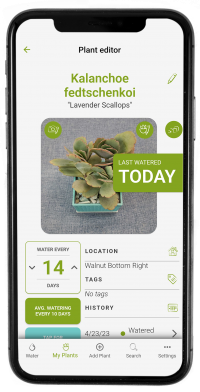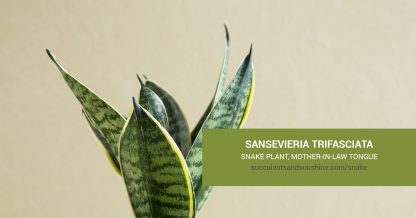Care and Propagation Information
General Care for Mammillaria plumosa “Feather Cactus”
“Feather Cactus” does well in container gardens. Its flowers range from white to yellow to pink, and although in some areas they can bloom throughout the year, typical flowering occurs in the Spring.
It is considered a “Near Threatened” species.
Watering
Mammillaria plumosa “Feather Cactus” has typical watering needs for a succulent. It's best to use the “soak and dry” method, and allow the soil to dry out completely between waterings.
Where to Plant
Mammillaria plumosa “Feather Cactus” is not cold hardy, so if you live in a zone that gets colder than 20° F (-6.7° C), it's best to plant this succulent in a container that can be brought indoors. It does well in full to partial sun.
Plant in an area of your garden that gets 6 hours of sunlight a day. If planting indoors, place in a room that gets a lot of sunlight, such as near a southern-facing window (if you're in the Northern Hemisphere).
How to Propagate Mammillaria plumosa “Feather Cactus”
Mammillaria plumosa “Feather Cactus” can be propagated in several ways. The easiest way to propagate it would be from cuttings or offsets, however you can also harvest seeds from its fruit.
Cuttings
To grow Mammillaria plumosa from cuttings, use a sterile, sharp knife or pair of scissors. Remove a stem from the main plant, and allow it to callous for several days before placing on well-draining soil. Water whenever the soil has dried out completely.
Offsets
Mammillaria plumosa will produce offsets, sprouting up around the base of the plant. Simply cut these from the stem and allow the offsets to dry for one to two days before replanting in well-draining soil.
Seeds
With some effort, seeds from Mammillaria plumosa can be harvested from the fruit of the plant. Allow the fruit to over-ripen, then remove the seeds. Clean the seeds and let them dry before planting in well-draining soil.





